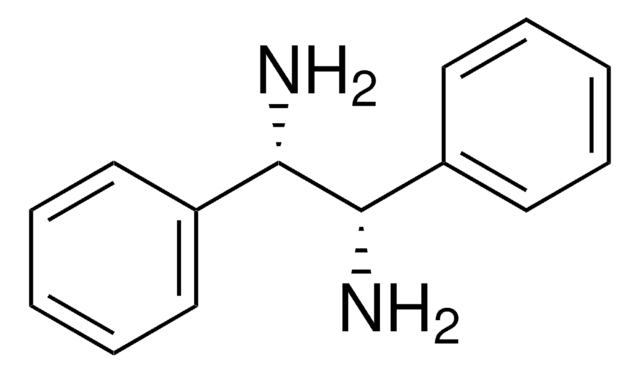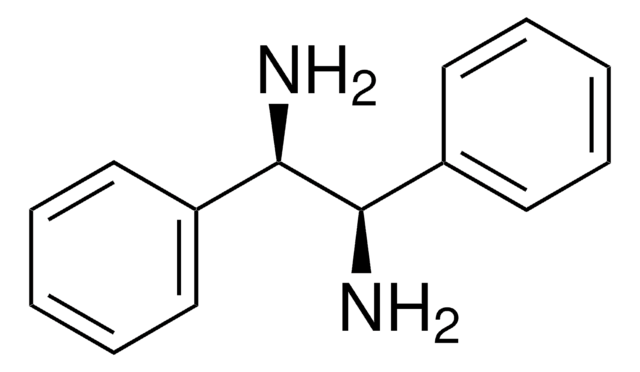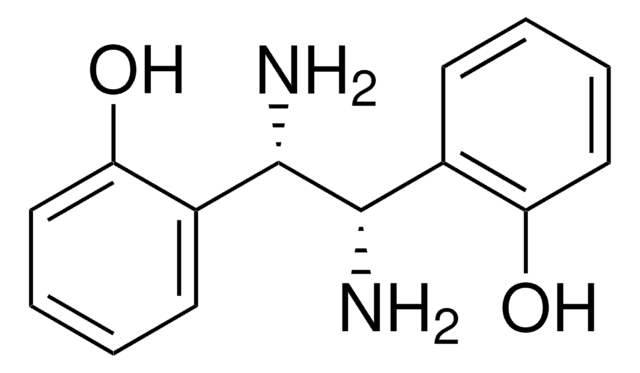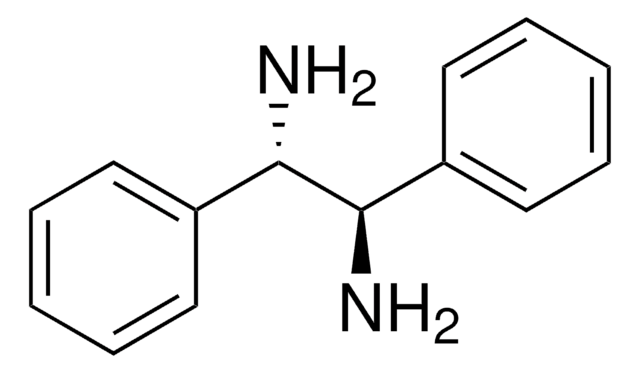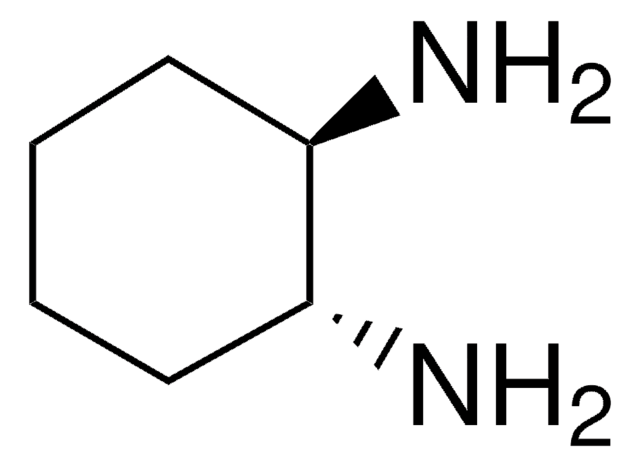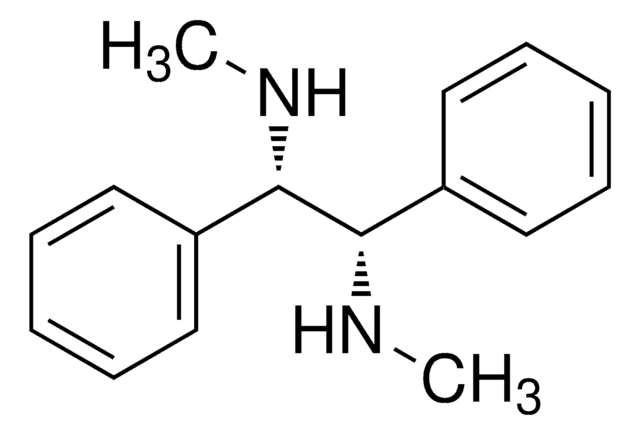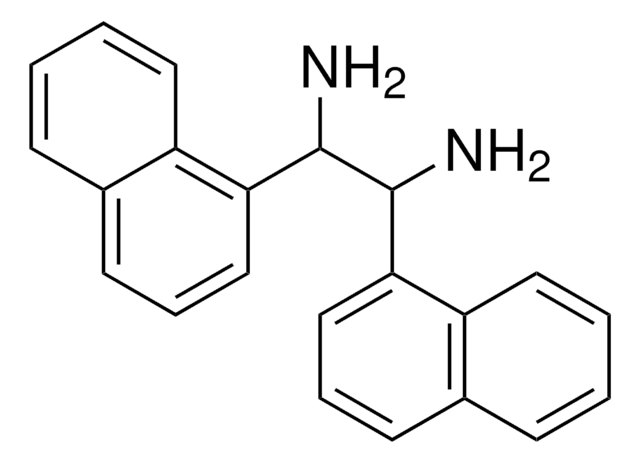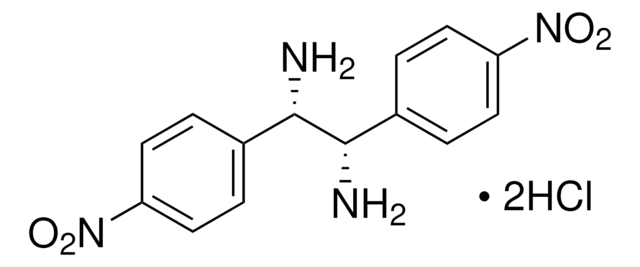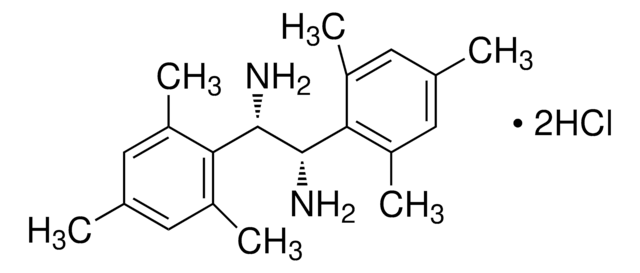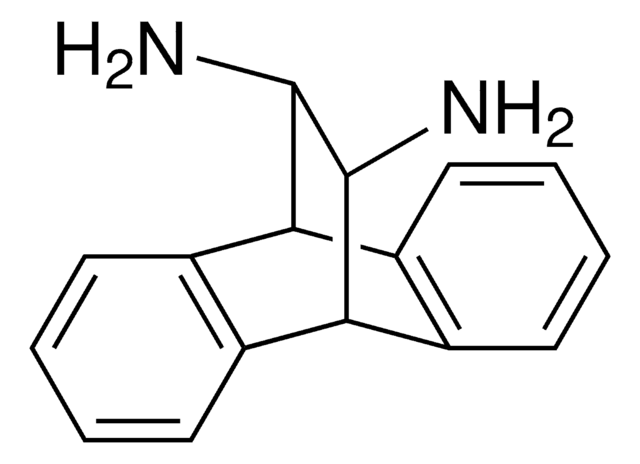684147
(1S, 2S)-1,2-di-1-Naphthyl-ethylenediamine dihydrochloride
97%
Synonym(s):
(S, S)-1,2-Bis(1-naphthyl)-1,2-ethanediamine dihydrochloride
About This Item
Recommended Products
Quality Level
assay
97%
form
powder
optical activity
[α]22/D +258.0°, c = 1 in H2O
mp
219-224 °C
functional group
amine
SMILES string
Cl[H].Cl[H].N[C@H]([C@@H](N)c1cccc2ccccc12)c3cccc4ccccc34
InChI
1S/C22H20N2.2ClH/c23-21(19-13-5-9-15-7-1-3-11-17(15)19)22(24)20-14-6-10-16-8-2-4-12-18(16)20;;/h1-14,21-22H,23-24H2;2*1H/t21-,22-;;/m0../s1
InChI key
SHNGCXWOHADIKG-IXOXMDGESA-N
Related Categories
Application
signalword
Warning
hcodes
Hazard Classifications
Acute Tox. 4 Oral - Eye Irrit. 2 - Skin Irrit. 2 - STOT SE 3
target_organs
Respiratory system
Storage Class
11 - Combustible Solids
wgk_germany
WGK 3
flash_point_f
Not applicable
flash_point_c
Not applicable
ppe
dust mask type N95 (US), Eyeshields, Gloves
Choose from one of the most recent versions:
Already Own This Product?
Find documentation for the products that you have recently purchased in the Document Library.
Customers Also Viewed
Articles
Chiral vicinal diamines are of tremendous interest to the synthetic chemist as they are found in many chiral catalysts and pharmaceuticals.
Related Content
The Chin group is interested in computational and experimental approaches to understanding stereoselective recognition and catalysis. Their studies in weak forces (H-bonding, electronic and steric effects) has led to a highly efficient method for making limitless varieties of chiral vicinal diamines from the 'mother diamine' that are useful for developing stereoselective organocatalysts or transition metal-based catalysts as well as for developing drugs (Acc Chem Res (2012) p1345). The 'mother diamine' is also useful for making binol, monophos and binap analogs. The Chin group is also interested in using reversible covalent bonds for stereoselective recognition and L to D conversion of natural and non-natural amino acids (EJOC (2012) p229).
Global Trade Item Number
| SKU | GTIN |
|---|---|
| 684147-100MG | 4061832624495 |
| 684147-1G | 4061826095874 |
Our team of scientists has experience in all areas of research including Life Science, Material Science, Chemical Synthesis, Chromatography, Analytical and many others.
Contact Technical Service